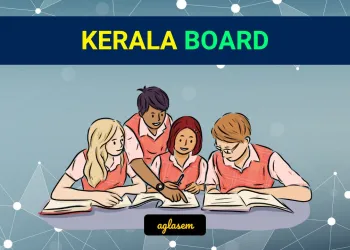NCERT Solutions for Class 12 Sociology Chapter 3 The Constitution and Social Change has been published by Aglasem. You can now download the Class 12 Sociology Ch 3 Questions and Answers PDF here. This NCERT Solutions for Class 12 Sociology contains answers of all questions asked in Chapter 3 in textbook, Social Change and Development in India. Therefore you can refer it to solve The Constitution and Social Change exercise questions and learn more about the topic.
NCERT Solutions for Class 12 Sociology Chapter 3 The Constitution and Social Change
Class – Class 12
Subject – Sociology
Chapter – Ch 3
Chapter Name – The Constitution and Social Change
Book – Social Change and Development in India
Study Material – NCERT Solutions
NCERT Solutions for Class 12 Sociology Chapter 3 PDF
While you can read NCERT Solutions for Class 12 Sociology Ch 3 for all exercises here on aglasem. You can also download this NCERT Solutions PDF to refer at anytime when you study The Constitution and Social Change. Here it is.
NCERT Solutions for Class 12 Sociology Chapter 3 PDF Download Link – Click Here to Download Solutions PDF
How to download NCERT Solutions for Class 12 Sociology Chapter 3 PDF?
You can download the complete NCERT solutions for chapter 3 of this NCERT Book i.e. Social Change and Development in India with following steps.
- First search NCERT Solutions for Class 12 Sociology Ch 3 PDF aglasem and come to this page.
- Now you will see the exercise questions answers of The Constitution and Social Change and download pdf link on it.
- Click the Download PDF link to obtain the The Constitution and Social Change questions with answers document.
NCERT Solutions for Class 12 Sociology
There are more chapters to study besides The Constitution and Social Change in this subject. So here are NCERT solutions for all topics of Sociology taught in 12th class here at aglasem.
Indian Society
- Chapter 1 Introducing Indian Society
- Chapter 2 The Demographic Structure of the Indian Society
- Chapter 3 Social Institutions: Continuity and Change
- Chapter 4 The Market as a Social Institution
- Chapter 5 Patterns of Social Inequality and Exclusion
- Chapter 6 The Challenges of Cultural Diversity
- Chapter 7 Suggestions for Project Work
Social Change and Development in India
- Chapter 1 Structural Change
- Chapter 2 Cultural Change
- Chapter 3 The Constitution and Social Change
- Chapter 4 Change and Development in Rural Society
- Chapter 5 Change and Development in Industrial Society
- Chapter 6 Globalisation and Social Change
- Chapter 7 Mass Media and Communications
- Chapter 8 Social Movements
NCERT Solutions for Class 12
Just like you got Sociology Ch 3 solutions here. You can see exercise questions answers of other subjects and their topics too on aglasem. Here are NCERT solutions for all subjects of 12th standard NCERT books.
- NCERT Solutions for Class 12 Accountancy
- NCERT Solutions for Class 12 Biology
- NCERT Solutions for Class 12 Business Studies
- NCERT Solutions for Class 12 Chemistry
- NCERT Solutions for Class 12 Economics
- NCERT Solutions for Class 12 English
- NCERT Solutions for Class 12 Geography
- NCERT Solutions for Class 12 Hindi
- NCERT Solutions for Class 12 History
- NCERT Solutions for Class 12 Maths
- NCERT Solutions for Class 12 Physics
- NCERT Solutions for Class 12 Political Science
- NCERT Solutions for Class 12 Psychology
- NCERT Solutions for Class 12 Sociology
NCERT Solutions for Class 12 Sociology Chapter 3 – An Overview
The key highlights of this study material are as follows.
| Aspects | Details |
|---|---|
| Class | Class 12 |
| Subject | Sociology |
| Chapter Number | Ch 3 |
| Chapter Name | The Constitution and Social Change |
| Book Name | Social Change and Development in India |
| Book By | NCERT (National Council of Educational Research and Training) |
| Educational Resource Here | NCERT Solutions of Class 12 Sociology Ch 3 for All Exercise |
| More Questions Answers of This Subject | NCERT Solutions for Class 12 Sociology |
| Download Book Chapter PDF | NCERT Book Class 12 Sociology Chapter 3 |
| All Questions Answers For This Class | NCERT Solutions for Class 12 |
| Complete Solutions | NCERT Solutions |
If you have any queries on NCERT Solutions for Class 12 Sociology Chapter 3 The Constitution and Social Change, then please ask in comments below.
To get study material, exam alerts and news, join our Whatsapp Channel.







